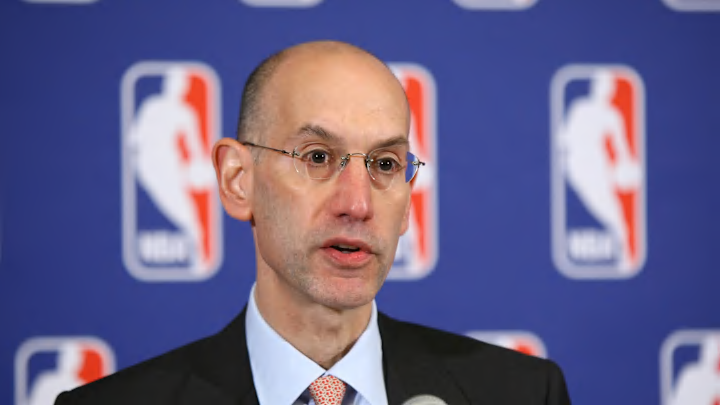Summer has arrived, bringing the NBA season to a pause. For the next few months, basketball enthusiasts will spend far too much time creating hypothetical trades and signings for their favorite teams while the actual front-office personnel dedicate endless hours to assessing what’s feasible.
Whether you're strategizing from your couch or an executive office, one key factor to consider is the implementation of the second apron of the new Collective Bargaining Agreement. Here’s a breakdown of what it entails and how it will reshape the landscape of the NBA.
Salary cap thresholds
Before diving into the Second Apron, it’s important to understand how each salary cap threshold works. The NBA has historically been known for a soft cap, which means teams can go over the salary cap to sign players in certain circumstances. Conversely, the MLB, NFL, and NHL have a hard cap, which means those circumstances do not exist.
Below is the projected monetary amount that defines each threshold for the 2024-25 NBA season.
● Salary cap: $142 million
● Luxury tax: $172 million
● First apron: $180 million
● Second apron: $190 million
The salary cap
The Salary Cap is the limit that NBA teams are given to spend on NBA salaries for a given season. As mentioned above, various exceptions allow a team to exceed the $142 million value. However, once a team exceeds $172 million in payroll, it faces a Luxury Tax penalty.
Luxury tax
This penalty starts at $1.50 for each dollar over the limit and increases progressively with higher amounts. If a team is a repeat offender, there is a more significant repeater tax; the Luxury Tax directly affects the team owner's wallet.
Most team owners are billionaires, and of course, money is money, but for years, big market teams have been more than comfortable paying the Luxury Tax. For example, the Golden State Warriors, Los Angeles Lakers, and Los Angeles Clippers have paid the Luxury Tax for the last four seasons.
First apron
The First Apron has existed since the 2017 CBA, and in addition to the Luxury Tax payments, it penalizes franchises' player transactions. Above this threshold, teams aren’t allowed to participate in the buyout market, sign and trade, or take back more salary than they receive in a trade.
While the First Apron imposed some restrictions, teams still had room to maneuver and make strategic moves. However, adding the Second Apron significantly tightens these limitations, effectively acting as the NBA's version of a hard salary cap and making it much more challenging for teams to build and maintain competitive rosters.
Second apron
The penalties from the First Apron also exist for the Second, but with a few wrinkles. In addition to being unable to sign and trade, a team above the Second Apron cannot aggregate the salaries of multiple players. For example, the Suns (currently over the Second Apron) wanted to trade Kevin Durant to the Knicks for Julius Randle and Mikal Bridges.
Kevin Durant is set to earn $52 million, which is the combined value of Julius Randle's and Mikal Bridges' contracts. If the Suns were under the Second Apron and both teams agreed to a trade, it would be permissible. However, because the Suns are above the Second Apron, they can't aggregate salaries this way. As a result, the Knicks would need to trade player-for-player, which isn't feasible since no player on their roster earns as much as Durant.
Teams that exceed the Second Apron also no longer have access to the mid-level exception, which has been a significant asset in recent years. For instance, two years ago, the Warriors used it to sign Donte DiVincenzo and just last year, the Lakers acquired Taurean Prince through this exception. Both players made substantial contributions to their respective teams.
Furthermore, there is a severe draft pick penalty. If a team's salary exceeds the Second Apron Level in a given Salary Cap Year, its first-round draft pick in the seventh Draft after that year (i.e., Suns pick in 2032) will be "frozen," meaning the pick cannot be traded. If the team's salary remains above the Second Apron Level in at least two of the next four Salary Cap Years, the Frozen Pick will be moved to the end of the First Round in that Draft, and the team can still not trade it.
Navigating these restrictions while trying to remain competitive presents a daunting task, making roster improvements a complex and delicate process. Silver has made the Second Apron a place no team wants to be, and this will transform the future of the NBA.
